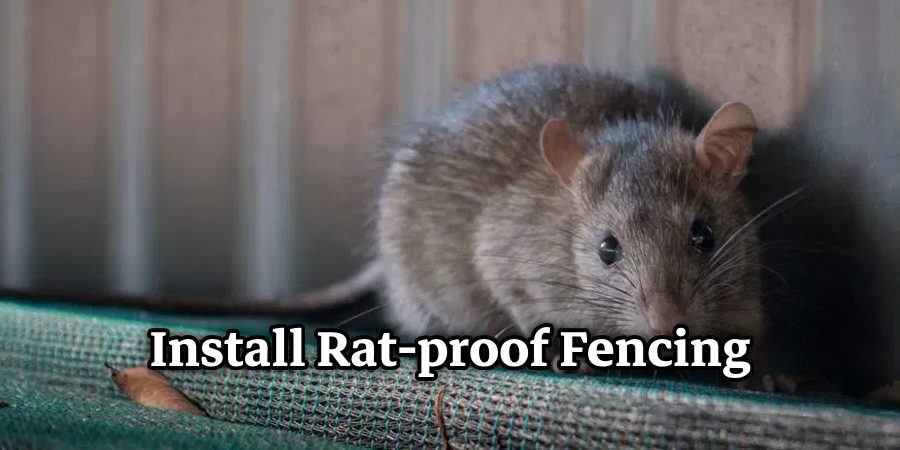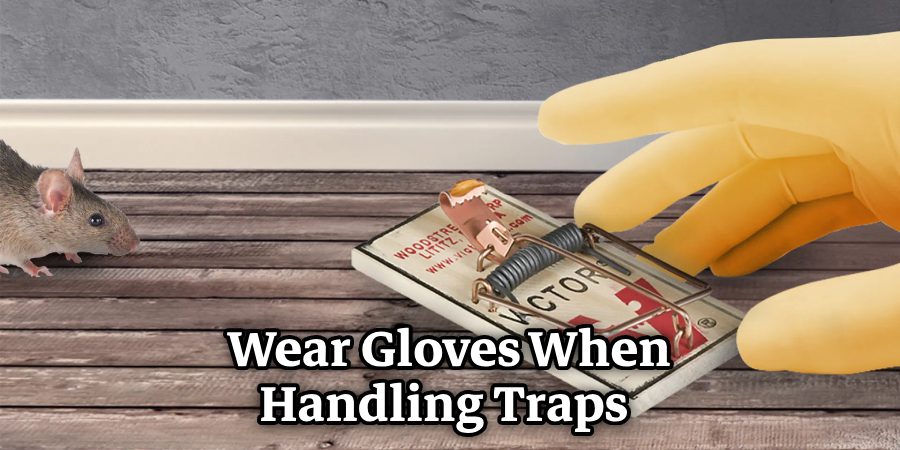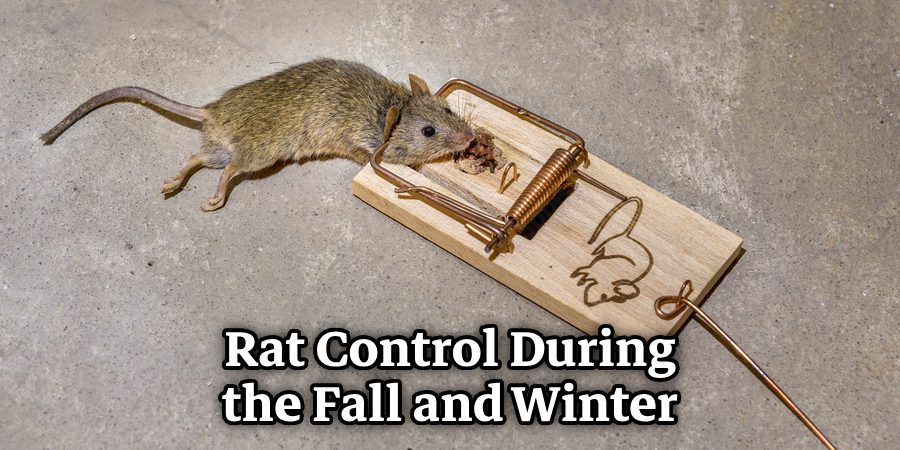This all-encompassing guide equips you with the information and resources needed to efficiently address outdoor rat infestations. Whether you choose traps, baits, natural deterrents, or In cases where you may require professional assistance, it’s crucial to act swiftly and implement preventive measures to deter rats from your outdoor area. A rat-free environment is within reach with the right approach and how to get rid of outdoor rats.
Tools And Materials: How to Get Rid of Outdoor Rats
When embarking on the journey to get rid of outdoor rats, it’s essential to have the right tools and materials at your disposal. Here’s a comprehensive list of what you’ll need to tackle the rat infestation effectively:
Tools:
- Safety Gear: Ensure your safety by wearing protective gear, including gloves and safety goggles, especially when handling traps, baits, or cleaning areas with rat activity.
- Flashlight: A flashlight will be invaluable for inspecting dark and hidden areas where rats may nest or travel.
- Rat Traps: Choose from various types of rat traps, such as snap traps, electronic traps, and live traps. Have enough traps to cover multiple locations.
- Bait Stations: If you’re using rat poison or bait blocks, invest in tamper-resistant bait stations to protect non-target animals and children.
- Sealant: You’ll need sealant materials like caulk or steel wool to seal gaps and entry points rats use to access your property.
- Garden Tools: Keep garden tools, such as shovels and rakes, handy for maintaining your outdoor space and removing potential rat hiding spots.
- Ladder: If you need to access elevated areas or inspect roofs, a sturdy ladder is essential for safety.
- Rat-Resistant Containers: Invest in rat-resistant containers for storing pet food, birdseed, and other potential rat attractants.
- Cleaning Supplies: Have cleaning supplies ready for disinfecting and sanitizing areas with rat activity.
- Ultrasonic Repellent Devices: If you’re using ultrasonic repellent devices, make sure you have them installed and positioned correctly.
Materials:
- Rat Baits: Whether you’re using poison baits or natural repellents like peppermint oil-soaked cotton balls, ensure you have an adequate supply.
- Bait: For traps, you’ll need bait to attract rats. Peanut butter, dried fruits, and nuts are popular choices.
- Bait Blocks: If you opt for bait blocks, have enough to replenish bait stations as needed.
- Peppermint Oil: If you’re using peppermint oil, make sure you have a sufficient quantity to create scent barriers.
- Tamper-Resistant Bait Stations: Purchase tamper-resistant bait stations to protect children and pets from accessing bait.
- Sealant: Stock up on sealant materials, including caulk and steel wool, for sealing entry points.
- Cleaning Supplies: Gather disinfectants, gloves, trash bags, and other cleaning supplies for safe and hygienic rat-infested area cleanup.
- Rat-Proof Fencing: If you plan to install rat-proof fencing, acquire the necessary materials, such as galvanized hardware cloth or wire mesh.

Having the right tools and materials is crucial for effective rat control. With these resources at your disposal, you’ll be well-prepared to tackle the rat infestation in your outdoor space and create a pest-free environment.
The Complete Guide: How to Get Rid of Outdoor Rats
Outdoor rats can be a nuisance and a health hazard. They often invade gardens, yards, and outdoor spaces, causing damage and spreading diseases. If you’re dealing with a rat problem in your outdoor area, don’t worry; This extensive guide will guide you through the necessary steps for successfully eradicating these pests. Let’s get started.
1. Understanding Outdoor Rats
Before diving into rat control methods, it’s essential to understand your adversary. Outdoor rats, often referred to as Norway rats or brown rats, are adaptable rodents that thrive in various environments. They are typically brown or grey with a long tail, sharp teeth, and a strong sense of smell.
Behaviour and Habits:
- Outdoor rats are nocturnal, meaning they are most active during the night.
- They are excellent climbers, swimmers, and burrowers, allowing them to access a wide range of outdoor areas.
- Rats are scavengers and can feed on a variety of foods, including garbage, pet food, and garden crops.
- They reproduce rapidly, with a single pair capable of producing numerous offspring in a short time.
2. Identifying Rat Infestations
Before taking action, you need to confirm that you have a rat infestation in your outdoor space. Look for these signs:
- Droppings: Rat droppings are typically dark brown and resemble grains of rice. Check for these near food sources or nesting sites.
- Gnaw Marks: Rats have strong teeth and will leave gnaw marks on wood, plastic, and other materials. Look for these signs of damage.
- Nesting Materials: Rats create nests using materials like shredded paper, cloth, or vegetation. Discovering nests can confirm their presence.
- Runways: Rats often use the same paths, creating runways through vegetation or along walls and fences. Look for these well-worn trails.
- Sightings: Observing rats, especially during the early morning or evening, is a clear indication of an infestation.

3. Creating a Rat-Proof Environment
The first step in rat control is making your outdoor space less attractive to them. Here’s how to create a rat-proof environment:
Remove Food Sources:
- Seal trash cans tightly and keep them clean.
- Store pet food indoors and avoid leaving it outside overnight.
- Harvest fruits and vegetables promptly, and keep garden areas clean of fallen produce.
Eliminate Shelter:
- Trim overgrown vegetation and bushes that can provide hiding spots.
- Ensure that you seal any gaps or openings in walls, fences, or outbuildings where rats could potentially establish nests.
- Reduce Water Access:
- Repair leaky faucets and ensure there is no standing water in containers or puddles.
Secure Compost Bins:
- Use rat-proof compost bins to prevent access to food scraps.
Block Entry Points:
- Inspect your property for gaps, holes, or cracks that rats could use to enter, and seal them with appropriate materials.
- Creating a rat-hostile environment is the first step in keeping these rodents at bay.
4. Using Traps for Rat Control
Traps represent a humane and efficient approach for capturing and eradicating outdoor rats. Here are some options:
Snap Traps:
- Snap traps are traditional and efficient. Place them along runways or near food sources with bait (e.g., peanut butter or dried fruit).
Electronic Traps:
- These battery-powered traps deliver a lethal electric shock when a rat enters. They are highly effective and reusable.
Live Traps:
- Live traps capture rats without harming them. After catching a rat, release it far away from your property.
- Remember to check and reset traps regularly for the best results. Wear gloves when handling traps to minimize scent transfer.

5. Employing Rat Poison and Baits
Rat poisons and baits can be effective if used correctly but also pose risks to non-target animals and children. Follow these guidelines:
Use Commercial Baits:
- Place bait stations or bait blocks in rat-activity areas.
- Keep baits out of reach of pets and children.
- Check and replenish baits regularly.
Rat Poison:
If using rat poison, follow label instructions carefully.
- Consider using tamper-resistant bait stations to prevent accidental ingestion by non-target animals.
Monitor and Remove Dead Rats:
- Be prepared for dead rats. Swiftly remove and properly dispose of them to prevent the spread of odors and potential diseases.
6. Natural Methods to Deter Rats
If you prefer natural and humane approaches, here are some methods to deter rats:
Owls and Hawks:
- Promote the presence of natural predators like owls and hawks in your vicinity by offering appropriate perches or nesting sites.
Peppermint Oil:
- Rats dislike the scent of peppermint oil. Immerse cotton balls in peppermint oil and position them in areas frequented by rats.
Ultrasonic Devices:
- Ultrasonic-repellent devices emit high-frequency sounds that rats find annoying. These can help deter rats from your property.
7. Seeking Professional Help
If your rat infestation persists despite your efforts, it may be time to consult a professional pest control service. Professionals in pest control possess both the expertise and the necessary tools to successfully eradicate rat infestations while also mitigating potential risks to other animals and the environment.

8. Preventing Future Rat Infestations
Once you’ve successfully rid your outdoor space of rats, take steps to prevent future infestations:
- Continue practising good sanitation, ensuring that food and trash are properly stored.
- Frequently inspect and maintain your property, ensuring that you seal off any possible entry points.
- Consider installing rat-proof fencing around your garden or yard.
- Keep vegetation well-trimmed to eliminate hiding spots.
By adhering to these measures and maintaining a watchful eye, you can maintain a rat-free outdoor area and relish a pest-free environment.
9. Ongoing Monitoring
After implementing rat control measures, it’s crucial to monitor your outdoor space regularly. Check traps, baits, and other deterrents to ensure they remain effective. If you detect any indications of rat activity, it’s crucial to promptly take measures to resolve the problem.
10. Rat-Proofing Structures
Rats can infiltrate buildings via small openings and cracks, thereby posing a threat to both indoor and outdoor spaces. To prevent this, consider the following rat-proofing methods:
- Seal gaps around doors, windows, and utility penetrations.
- Install door sweeps to close gaps beneath exterior doors.
- Screen attic and crawl space vents to prevent rat access.
- Inspect your garage and basement for potential entry points.
11. Rat-Resistant Landscaping
Landscaping choices can influence rat activity in your outdoor space. Opt for rat-resistant landscaping practices:
- Use gravel or mulch instead of dense ground cover plants, which rats may use as hiding spots.
- Elevate compost bins and woodpiles to reduce potential rat nesting sites.
- Keep tree branches trimmed away from buildings to prevent roof access.
12. Educate Your Neighbors
Rats don’t respect property boundaries, so it’s beneficial to educate your neighbours about rat control and prevention. Encourage them to follow similar practices to reduce the rat population in your area collectively.
13. Rat-Proof Fencing
Installing rat-proof fencing around your garden or yard can be highly effective in keeping rats out. Use materials such as galvanized hardware cloth or wire mesh to create barriers. Ensure that the fencing extends below ground to prevent burrowing.

14. Professional Exclusion Services
If rat infestations persist or are particularly challenging, You may want to contemplate enlisting the services of a specialized pest control company that excels in rat exclusion. These experts can assess your property, identify vulnerabilities, and implement comprehensive rat-proofing measures.
15. Stay Informed
Rat control methods and technologies are continually evolving. Stay informed about the latest developments in rat control and prevention to adapt your strategies accordingly. Being proactive and knowledgeable can help you maintain a rat-free outdoor space.
16. Legal Considerations
Be aware of any local regulations regarding rat control. Some areas may have specific guidelines or restrictions on the use of traps, poisons, or other control methods. Always adhere to local laws and regulations when addressing rat infestations.
17. Rat-Resistant Containers
In addition to securing food sources, invest in rat-resistant containers for storing birdseed, pet food, and other items that might attract rats. These containers are designed to keep rodents out, reducing the likelihood of infestations.
18. Educating Family Members
Make certain that all members of your household are well-informed about rat control and prevention. Teach family members about the signs of rat activity and the importance of proper food storage and sanitation practices. A collective effort can significantly improve rat control.
19. Maintaining Your Yard
Regular yard maintenance is crucial for rat control. Keep grass trimmed, remove clutter, and regularly inspect your property for potential rat hiding spots. Eliminate piles of debris, old furniture, and unnecessary items that rats could use as shelter.
20. Rat-Proof Bird Feeders
If you have bird feeders, consider using rat-proof bird feeders that prevent rats from accessing the seeds. Rats are attracted to spilt birdseed, so minimizing this food source can deter them.
21. Rat-Proofing Chicken Coops
If you keep chickens or other small livestock, rat-proofing your coop is essential. Ensure that feed is stored in secure containers, Additionally, seal any openings that rats could utilize to gain access to the coop. Regularly clean up a spilt feed to reduce the attraction.
22. Rat-Resistant Plants
Choose plants that are less appealing to rats for your landscaping. Plants with strong scents, thorns, or spines can deter rats from nesting in your outdoor space.
23. Seasonal Considerations
Be aware that rat activity may vary seasonally. Rats may seek shelter in your outdoor areas during colder months, so pay extra attention to rat control during the fall and winter.

24. Public Health Concerns
Rats have the potential to carry diseases that can be transmitted to humans. If you suspect a rat infestation near your home, be cautious about direct contact with rats, their droppings, or nesting materials. Wash your hands thoroughly after handling any rat-related materials.
25. Reporting Rat Infestations
In some areas, local health authorities may want to be notified of rat infestations to assess and address potential public health concerns. If you believe you have a severe rat problem that poses a health risk, consider reporting it to the appropriate authorities.
26. Rat Control Products
There are various rat control products available in the market, such as electronic rat repellents, ultrasonic devices, and motion-activated sprinklers. Research and consider these products as complementary measures to your rat control strategy.
27. Community Efforts
Consider organizing or participating in community efforts to address rat infestations collectively. Sharing knowledge and resources with neighbours can help create a more rat-resistant neighbourhood.
Final Thoughts
Outdoor rats can be a persistent challenge, but with determination, vigilance, and the right strategies, you can effectively how to get rid of outdoor rats control and prevent rat infestations in your outdoor spaces. Remember that rat control is an ongoing process, Remaining proactive is essential to sustaining a rat-free environment.
By adhering to the steps detailed in this comprehensive guide and adapting them to your specific situation, you can enjoy a pest-free outdoor area and protect your property from the nuisance and potential health risks associated with rats.
Professional Focus:
Arden Bernier is dedicated to exploring and advancing patio design and maintenance, combining practical knowledge with innovative solutions. Specializing in outdoor living spaces, he provides expert advice on patio fixes, landscaping, and sustainable outdoor design. With a focus on creating functional, aesthetic, and durable outdoor environments, Arden empowers homeowners to transform their patios into beautiful and relaxing retreats.
Vision:
To inspire and assist homeowners in creating functional, aesthetically pleasing outdoor spaces. Arden encourages creativity and practical problem-solving in patio design, making outdoor living more accessible and enjoyable for everyone.
Education:
- Bachelor of Arts (BA) in Environmental Design – University of California, Berkeley.
- Master of Science (MS) in Landscape Architecture – University of Southern California.
- Specialized training in sustainable landscape design, outdoor space planning, and eco-friendly materials.
Recognition:
- Author at PatioFixes.com, providing expert advice on patio maintenance and design.
- Featured in online platforms and home improvement blogs for valuable tips on patio fixes and outdoor living.
- Recognized for his contributions to making outdoor spaces more eco-friendly and sustainable.
Expertise:
Patio expert with a focus on creating functional, beautiful, and durable outdoor living spaces. Specialization includes:
- Patio design and construction
- Outdoor furniture and décor
- Landscaping and sustainable patio solutions
- Outdoor maintenance and repair techniques
